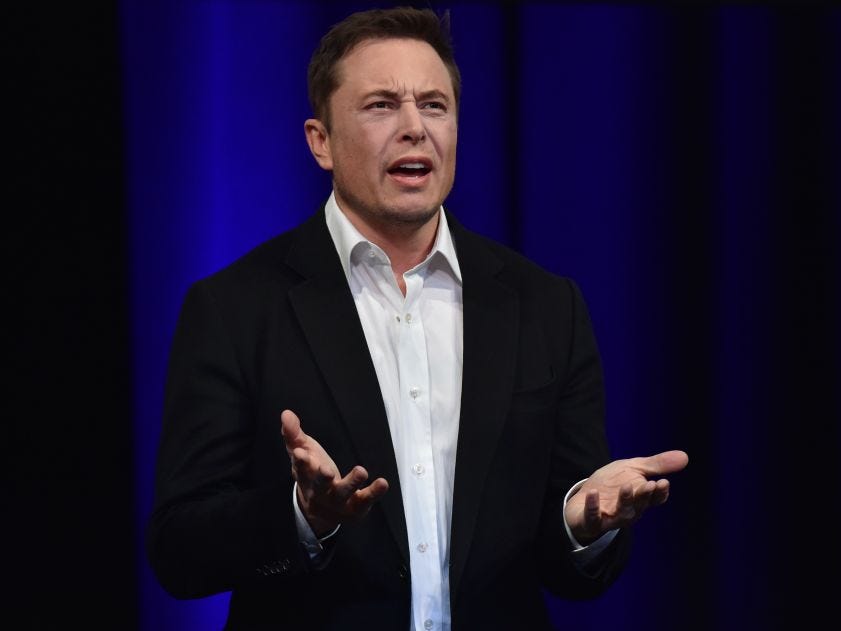-
Tesla’s “We, Robot” event left analysts with more questions than answers.
-
Wall Street was broadly disappointed by the lack of detail and skeptical of Elon Musk’s timeframes.
-
The EV maker’s stock dropped as much as 10% in early trading on Friday.
Elon Musk’s “We, Robot” event on Thursday night failed to impress several Wall Street analysts.
Investors also showed their disappointment by sending Tesla shares down as much as 10% in early trading on Friday. The stock is now 15% lower than it was this time last year, with the company valued at just under $700 billion.
The Tesla CEO showed off prototypes of its self-driving car, dubbed the robotaxi and officially called the Cybercab, as well as its Optimus humanoid robots and a 20-passenger Robovan. But Musk failed to unveil the more affordable car he teased on July’s earnings call, whose production he said was on track to start in the first half of next year.
Here’s how Tesla analysts and commentators reacted to the event.
-
Gene Munster, a managing partner at Deepwater Asset Management, posted on X that the absence of Tesla’s cheaper model stood out. Musk may have withheld it to avoid people canceling or delaying vehicle orders and waiting for its release, Munster said.
-
Dan O’Dowd, the CEO of Green Hills Software and a vocal skeptic of Tesla’s autonomous-driving efforts, said the closely controlled demonstration of the Cybercab looked more like a “1950s Disneyland ride” than the future of transportation.
“Elon Musk is trying to compete in the Tour de France on a tricycle,” he said in an emailed note, saying that rival Waymo was miles ahead in rolling out the tech.
-
Paul Miller, a principal analyst at the research firm Forrester, said it would be “extremely difficult” for Tesla to realize Musk’s vision of selling a Cybercab for under $30,000 by 2026 or 2027.
“Without external subsidies, or Tesla making a loss on every vehicle, it doesn’t seem plausible to launch at anything close to that price this decade,” Miller said in a note that emphasized the regulatory hurdles ahead.
-
In a research note, Jefferies analysts covering Uber called out Tesla’s lack of verifiable proof of progress toward autonomous driving. They also underlined the challenges of scaling a robotaxi business, from the tech required to the regulation involved and the complexity of routing and fleet management.
-
Garrett Nelson, a senior equity analyst at CFRA Research, said in a research note the Tesla event “raised a lot of questions” and that he was “disappointed by the lack of detail” about the company’s short-term product road map.
-
Dan Ives, a Wedbush analyst and longtime Tesla bull, said in a research note the Cybercab’s design was “very impressive” and that Optimus was closer to becoming reality than he expected. He also hailed the prospect of a robotaxi fleet as transformative for Tesla, saying it “could be a $10 billion annual business at scale.”
In a morning note, Ives agreed with other analysts that Musk and Tesla should have shared more details about their self-driving ambitions. But he said that he and his colleagues “strongly disagree” that the event was a disappointment after seeing Cybercab in person and witnessing the “massive improvements” in Optimus.
-
Analysts at Bank of America said in a note that the launch event “lived up to the hype” but that the target of starting production in 2026 “may be optimistic.”
The BofA analysts reiterated a “buy” rating on the stock, adding: “Interestingly, Musk stated that the underlying AI technology for Optimus is the same as that used in vehicles since the difference between the two only stands in their respective physical shape. We think this speaks to the fact that at this point Tesla is more than a traditional automotive company. Although the financial ramifications of these potential new products are unclear, AI and robotics could be a major development path for Tesla over the next decade.”
Read the original article on Business Insider
Read the full article here

